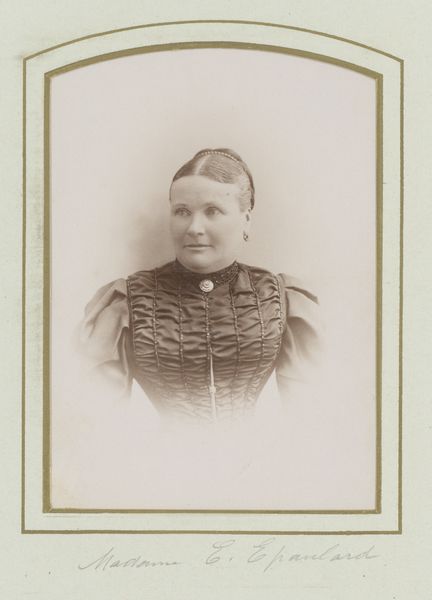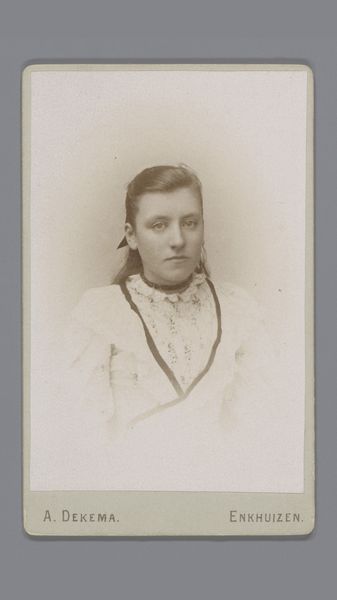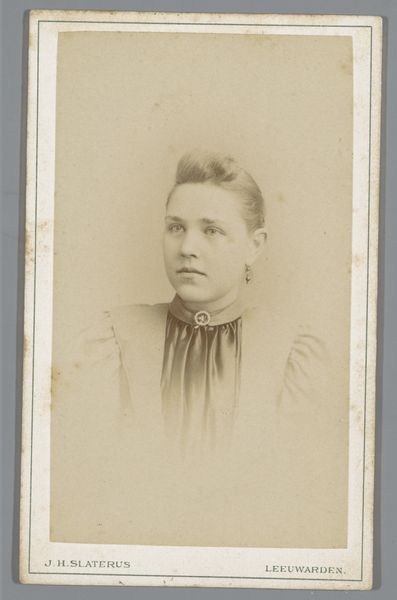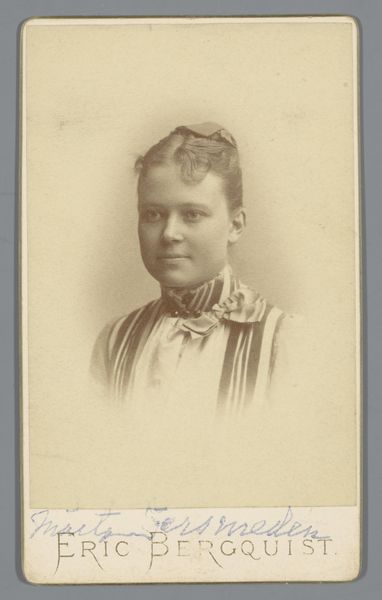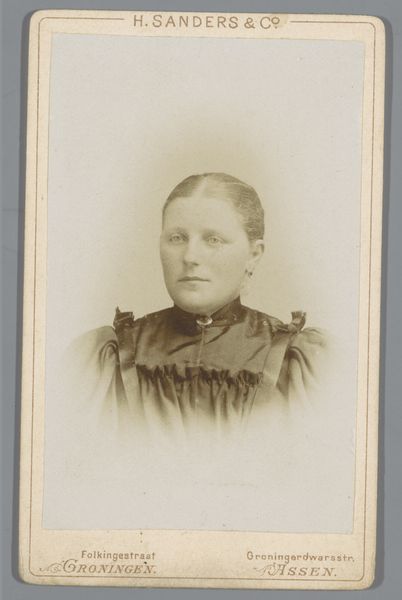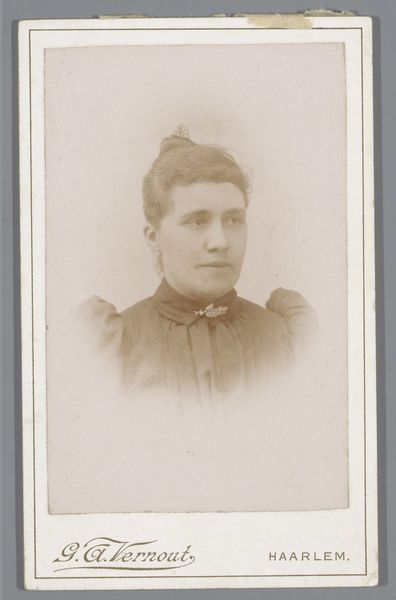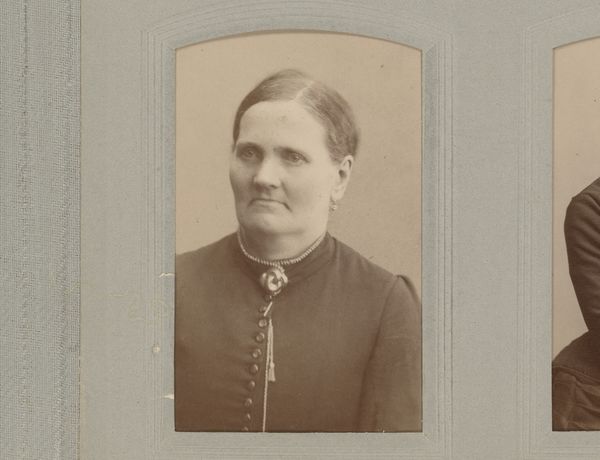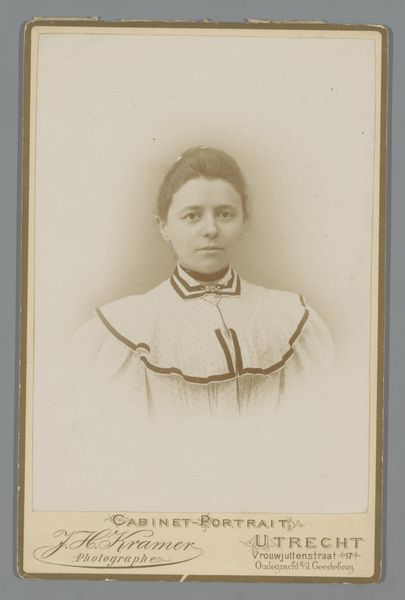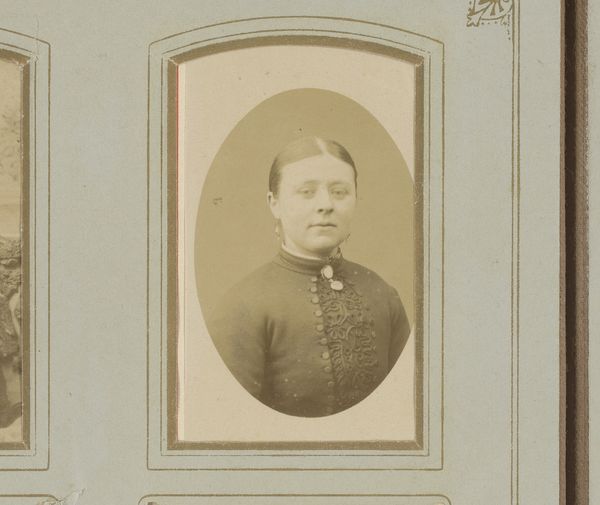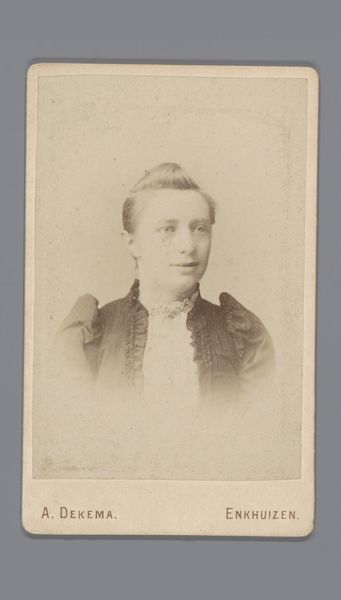
photography
#
portrait
#
photography
#
portrait drawing
#
realism
Dimensions: height 135 mm, width 96 mm
Copyright: Rijks Museum: Open Domain
Editor: This is an early photograph, "Portret van een vrouw," placing it anywhere from 1882 to 1914. It's at the Rijksmuseum, but the artist isn't identified, which makes me wonder who she was and who made this photograph. Her gaze is very direct. What do you see in this piece? Curator: The averted gaze can say as much about a subject, even more at times, as a penetrating stare can. In this "Portret van een vrouw" it speaks volumes. There's a quiet resilience hinted at, don't you think? This visual language has to be contextualized, of course. The dark clothing, the simplicity of adornment -- do these elements speak to a specific social stratum of the time, or perhaps even suggest something about her inner world, her psychological landscape? Editor: I hadn't considered the clothing as symbolic, but the dark fabric does lend a certain severity. I initially read it as realism, simply documenting her appearance. But now, thinking about how the photo was composed, how everything seems muted... Curator: Precisely. Early portrait photography was a curated performance, even in its apparent realism. The light, the pose, and of course, the deliberate inclusion or exclusion of particular objects. Those all speak to a visual vocabulary that both reflects and shapes its culture. The absence of any bright, cheery signifiers seems particularly deliberate to me. This becomes even more suggestive, I believe, due to it not having a known creator. Editor: It’s amazing to consider the possible layers of symbolism beneath the surface of what I thought was a simple portrait. Curator: Absolutely. By recognizing how deeply intertwined images are with the cultural memory and psychological coding of a period, we unlock a richer understanding, don't you agree?
Comments
No comments
Be the first to comment and join the conversation on the ultimate creative platform.

